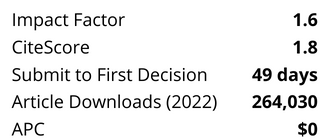In many Countries, small communities are required to treat wastewater discharges to increasing standards of lesser environmental impacts, but must achieve that goal at locally sustainable costs. While biological membrane treatment (membrane bio-reactors (MBRs)) is quickly becoming the industry standard for centralized wastewater treatment plants, and would also be ideally suited also for small plants potentially subject to relatively large hydraulic load variations, its investment and operating costs are usually high for that class of applications. Consequently, small treatment plants are generally configured as anoxic or aerated biological tanks with little sedimentation, making them quite susceptible to hydraulic loads transient and sludge quality changes. As an alternative, Constructed Wetlands Systems (CWSs) are gradually and successfully being introduced in many Countries. CWSs are designed to utilise the natural functions of wetland vegetation, soils and their microbiological populations to treat wastewater. Pretreatment occurs by filtration and settling, followed by bacterial decomposition in a natural-looking lined marsh. A new technology, a new type of membrane-like aerobic reactor initially designed for the degradation of hydrocarbon-derived groundwater contaminants, was recently tested for treating domestic, with performance similar to that of MBRs. Examples from the above applications are illustrated and compared in this paper. The paper also discusses merits and drawbacks of the various illustrated technologies, in view of their sustainability potential, and according to the new development paradigms for urban water systems, that encourage the development of local water-cycle clusters with local reuse and recycle of the resource, and possible local recovery of energy and/or materials.
Skip Nav Destination
Article navigation
Research Article|
June 01 2017
Sustainability of decentralized wastewater treatment technologies
A. G. Capodaglio;
A. G. Capodaglio
*
1DICAr, University of Pavia, Via Ferrata 3, Pavia 27100, Italy
*Corresponding author. E-mail: capo@unipv.it
Search for other works by this author on:
A. Callegari;
A. Callegari
1DICAr, University of Pavia, Via Ferrata 3, Pavia 27100, Italy
Search for other works by this author on:
D. Cecconet;
D. Cecconet
1DICAr, University of Pavia, Via Ferrata 3, Pavia 27100, Italy
Search for other works by this author on:
D. Molognoni
D. Molognoni
1DICAr, University of Pavia, Via Ferrata 3, Pavia 27100, Italy
Search for other works by this author on:
Water Practice and Technology (2017) 12 (2): 463–477.
Citation
A. G. Capodaglio, A. Callegari, D. Cecconet, D. Molognoni; Sustainability of decentralized wastewater treatment technologies. Water Practice and Technology 1 June 2017; 12 (2): 463–477. doi: https://doi.org/10.2166/wpt.2017.055
Download citation file:
Sign in
Don't already have an account? Register
Client Account
You could not be signed in. Please check your email address / username and password and try again.
Could not validate captcha. Please try again.
eBook
Pay-Per-View Access
$38.00




%20cropped.png?versionId=5954)